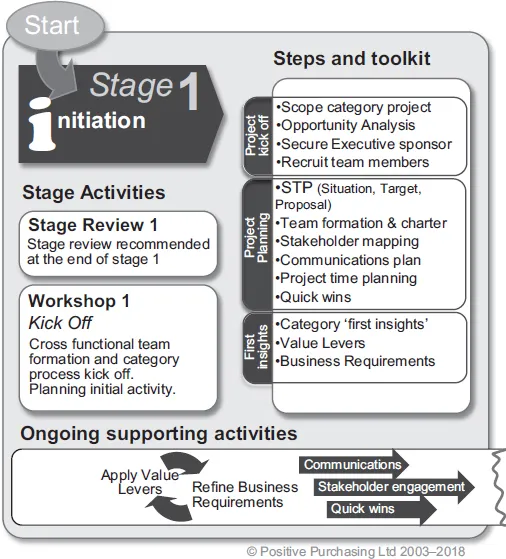
Category Management in Purchasing
A Strategic Approach to Maximize Business Profitability
Jonathan O'Brien
- English
- ePUB (adapté aux mobiles)
- Disponible sur iOS et Android
Category Management in Purchasing
A Strategic Approach to Maximize Business Profitability
Jonathan O'Brien
À propos de ce livre
Category Management in Purchasing is a comprehensive guide to strategic category management which provides a step-by-step guide to its implementation and use, and enables readers to deliver value and cost savings when sourcing and purchasing. Now in its fourth edition, this text has cemented its place as the essential reference for category management practitioners.
In this new edition, Jonathan O'Brien shows how a strategic approach needs to integrate with other approaches, such as supplier relationship management and how the procurement function negotiates. Additionally, this new edition includes some new insights, based upon the experience of senior practitioners in industry, on how to make category management a success in the organization. It also includes some general updates and contextualizes the future procurement function and an ever increasing digitally enabled, de-globalized, post Brexit world. There is also additional material on the effect of international developments on procurement, updated tools and templates, and examples of how these have been successfully used in industry. Category Management in Purchasing, 4th edition connects theory and practice and provides readers with the tools to analyze complex sourcing situations quickly and clearly, and so develop innovative and creative proposals for sourcing.
Foire aux questions
Informations
04
Stage 1: Initiation
- 4 How can I identify and prioritize potential opportunity for each category so I can direct my resources accordingly?
- 6 How do I engage the wider organization within a category-based approach?
- 7 For any given category, how do I identify what the organization needs to buy?
- 8 For each and any category, what is my current position?
The initiation toolkit
- formation, alignment and motivation of the cross-functional team that will work on the category project;
- verification of the opportunity, along with gaining some early insight into and understanding of what is happening in the category;
- identification of how stakeholders will be engaged and how project progress and results delivery will be communicated to them and the wider business;
- formation of a precise statement of the business requirements;
- identification of potential sources of value;
- delivery of early benefits;
- planning of the project.
KICKING OFF THE CATEGORY MANAGEMENT PROCESS
Scoping the category project
- How do we define the category?
- What does the category do, and should the scope be based around this?
- What are the market boundaries? How is the marketplace organized and what determines the boundaries of the marketplace? Our starting point for the category scope is that it should mirror how the market is organized and be market facing, looking as wide as possible
- What are the geographical boundaries? Defining geographical boundaries must reflect how the marketplaces for the category are organized, but multiple category projects could work on different territories, with overarching collaboration.
- Are there any time-frame implications that would define the scope? For example, a tour operator may organize business around the annual bulk printing of all holiday brochures for the forthcoming season. The category scope may be to look to provide the sourcing strategy for a defined number of seasons or time periods.
- Are there any organizational boundaries that need to be imposed, perhaps where pre-existing arrangements prevent changing current contractual arrangements? An example scope statement here might be: ‘Electricity utility provision for all European sites except the two German factories’. However, be careful not to exclude areas without good reason: you could be excluding a breakthrough!
- printed packaging: for all US operations;
- travel agency: global travel agency provision for all sites except Australia;
- bulk chemicals: bulk supply (ie loads over 1 tonne) to all UK sites of sodium hypochlorite, sodium bisulphate, ferric chloride and calcium nitrate.
